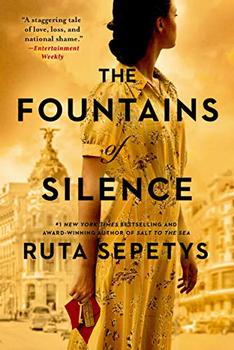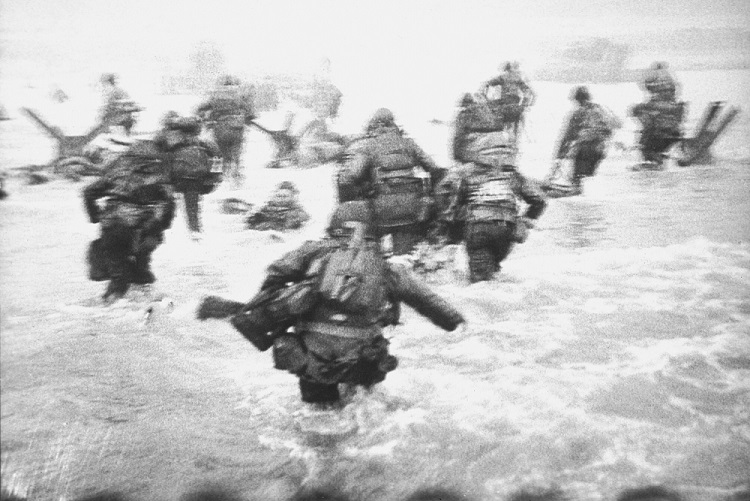Summary | Excerpt | Reading Guide | Reviews | Beyond the Book | Read-Alikes | Genres & Themes | Author Bio

This article relates to The Fountains of Silence
 In The Fountains of Silence, Daniel is a budding photojournalist who admires the work of Robert Capa. Capa, born Endre Erno Friedmann in Hungary, experienced first-hand the rise of Hitler and Nazism. After studying photography in Paris and meeting kindred spirit Gerda Pohorylle (better known by her pseudonym Gerda Taro), he emigrated to the United States and changed his name to Robert Capa. For a while, Capa and Taro produced photographs together under his name, but Taro eventually wanted individual credit for her work. In his short lifetime (he died at age 40), Capa revolutionized wartime photography. He was the only civilian photographer at Omaha Beach on D-Day; some of the most iconic pictures of that event were shot by him, and he was awarded the Medal of Freedom for his coverage of World War II by Eisenhower in 1947.
In The Fountains of Silence, Daniel is a budding photojournalist who admires the work of Robert Capa. Capa, born Endre Erno Friedmann in Hungary, experienced first-hand the rise of Hitler and Nazism. After studying photography in Paris and meeting kindred spirit Gerda Pohorylle (better known by her pseudonym Gerda Taro), he emigrated to the United States and changed his name to Robert Capa. For a while, Capa and Taro produced photographs together under his name, but Taro eventually wanted individual credit for her work. In his short lifetime (he died at age 40), Capa revolutionized wartime photography. He was the only civilian photographer at Omaha Beach on D-Day; some of the most iconic pictures of that event were shot by him, and he was awarded the Medal of Freedom for his coverage of World War II by Eisenhower in 1947.
 Capa covered other wars as well, including the Spanish Civil War. Lasting from 1936 to 1939, that precursor to World War II was fought between left-wing Republicans, encompassing those with Communist or socialist leanings; and the right-wing Nationalists, including conservatives and strict Catholics, led by General Francisco Franco. Franco was victorious, and ruled Spain until his death in 1975. Robert Capa's photographic coverage of the war was published in popular American magazines like Life. For a time, he collaborated with author Ernest Hemingway, who was covering the Spanish Civil War as a journalist for the North American Newspaper Alliance. He also worked with John Steinbeck on a book about post-WWII Russia. In July 1937, Gerda Taro, who had become the love of Capa's life as well as a frequent artistic collaborator, was killed returning from an assignment near Madrid when the truck she was riding in was struck by a tank. Capa died in 1957 after stepping on a landmine while covering the First Indochina War.
Capa covered other wars as well, including the Spanish Civil War. Lasting from 1936 to 1939, that precursor to World War II was fought between left-wing Republicans, encompassing those with Communist or socialist leanings; and the right-wing Nationalists, including conservatives and strict Catholics, led by General Francisco Franco. Franco was victorious, and ruled Spain until his death in 1975. Robert Capa's photographic coverage of the war was published in popular American magazines like Life. For a time, he collaborated with author Ernest Hemingway, who was covering the Spanish Civil War as a journalist for the North American Newspaper Alliance. He also worked with John Steinbeck on a book about post-WWII Russia. In July 1937, Gerda Taro, who had become the love of Capa's life as well as a frequent artistic collaborator, was killed returning from an assignment near Madrid when the truck she was riding in was struck by a tank. Capa died in 1957 after stepping on a landmine while covering the First Indochina War.
Today we speak of journalists being "embedded" with military units. Though what he did foreshadowed this practice, unlike these more recent writers and photographers, Capa was not committed to favoring one side or the other. Like Daniel in The Fountains of Silence, he took photographs of moments that spoke to him and let the stories tell themselves.
For more information about Robert Capa and Gerda Taro, the young adult nonfiction book Eyes of the World: Robert Capa, Gerda Taro, and the Invention of Modern Photojournalism by Marc Aronson and Marina Budhos provides an accessible introduction.
Normandy photo by Robert Capa, courtesy of The National Museum of American History
Gerda Taro and Robert Capa
Filed under People, Eras & Events
![]() This "beyond the book article" relates to The Fountains of Silence. It originally ran in November 2019 and has been updated for the
September 2020 paperback edition.
Go to magazine.
This "beyond the book article" relates to The Fountains of Silence. It originally ran in November 2019 and has been updated for the
September 2020 paperback edition.
Go to magazine.
Your guide toexceptional books
BookBrowse seeks out and recommends the best in contemporary fiction and nonfiction—books that not only engage and entertain but also deepen our understanding of ourselves and the world around us.